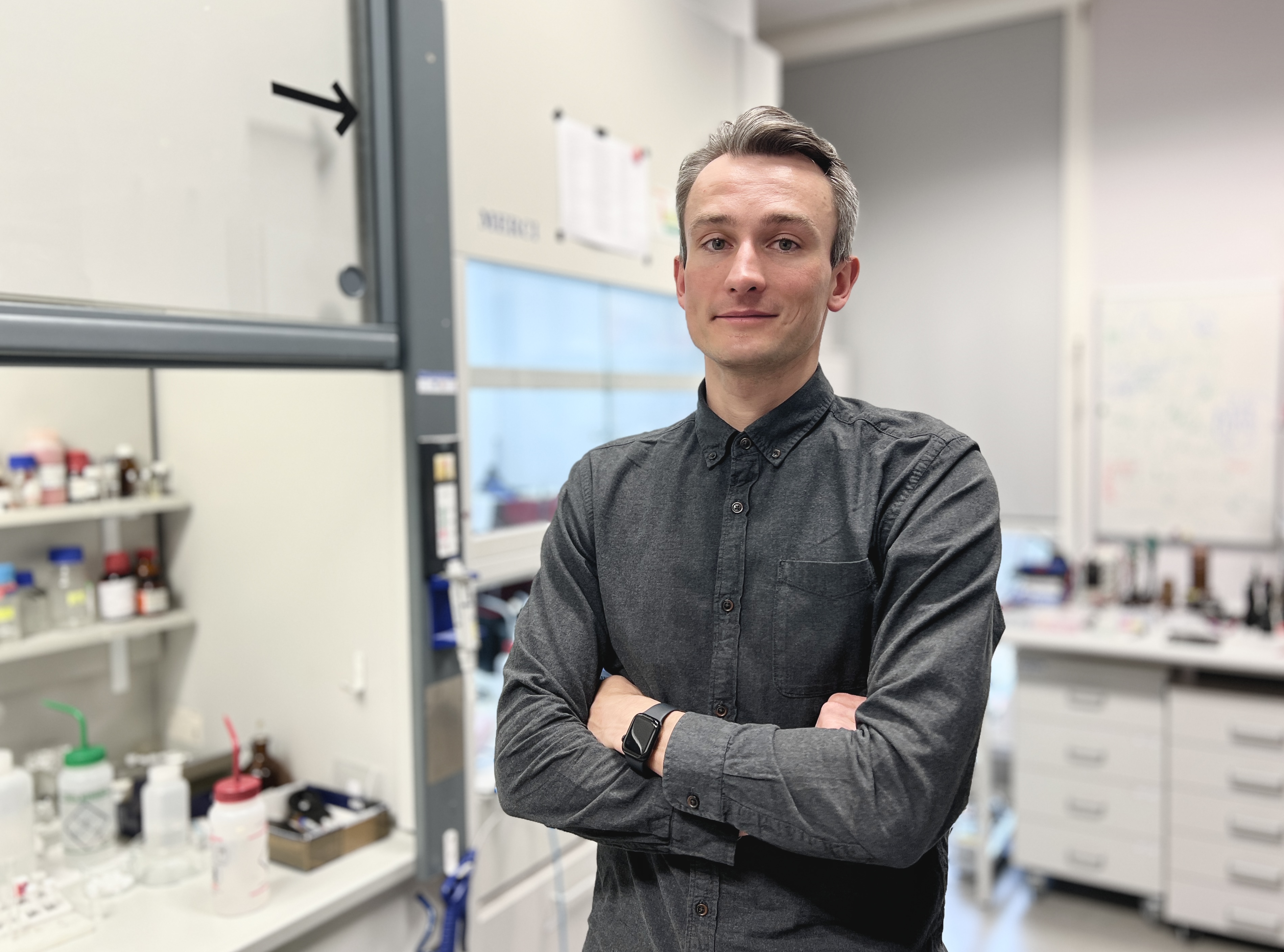Artificial Intelligence Inspires VU Scientist to Develop a Method That Accelerates Research Into Light-Converting Systems
 Dr Paulius Baronas.
Dr Paulius Baronas.
Scientific research is a long and meticulous process where human error can be costly and even compromise the intended results. That’s why researchers are constantly seeking ways to involve robots in their work. A recent breakthrough in this area has come from scientists at Vilnius University’s (VU) Faculty of Physics. Together with colleagues from Catalonia, they have demonstrated that highly complex light conversion studies can successfully be carried out by automated systems. Their achievement was even featured on the cover of the prestigious journal “ACS Central Science”.
Inspired by the Rise of Artificial Intelligence
Organic optoelectronics is one of the fastest-growing technological fields globally, aiming to use organic materials in the development of electronic and optoelectronic devices. It is estimated that by 2027, the global market for these technologies will surpass 300 billion US dollars. While the term “organic optoelectronics” may be unfamiliar to many, people frequently use devices made possible by it, such as OLED displays, and in the near future, potentially lasers, solar cells, and transistors.
This field is also distinguished by its interdisciplinarity. Research into organic materials and light conversion—carried out in Lithuania by scientists at VU’s Institute of Photonics and Nanotechnology—requires the collaboration of experts in chemistry, physics, and information technology. The research process itself demands extreme precision and care.
As physicist Dr Paulius Baronas explains, each experiment involves numerous variables, and even a minor human error can mean starting the whole process over again. The need to eliminate such risks is what inspired the idea of automating the research process.
“I was inspired by the increasing use of artificial intelligence in scientific research, especially in areas with a large number of variables. One of the most important projects of the past decade has been the attempt to speed up the discovery of new molecules by automating chemical synthesis. Although we live in a digital age, the creation of chemical compounds for medicine or new materials is still largely done using outdated, manual methods. However, successful attempts are already being made to do this in closed automated systems where humans only give tasks to artificial intelligence,” the scientist explains.
An Opportunity to Work More Efficiently and Economically
Dr P. Baronas had the idea that the same principle could be applied to research in organic optoelectronics. He had the opportunity to put this idea into practice during his internship at the Polytechnic University of Catalonia. Over two years, he and his colleagues built an automated laboratory and successfully proved that this approach is not only feasible but, in many ways, superior to traditional manual methods.
“There are three main advantages: accuracy, speed, and cost-efficiency. In scientific research, results are sometimes difficult to reproduce due to human error. Speed is essential when large-scale studies need to be carried out—something that would be impossible relying solely on human resources. Automated research can also be conducted with much smaller quantities of test materials, which means saving on expensive reagents during large-scale studies,” explains the physicist.
According to him, research automation also changes the role of the scientist. In designing the process, one must critically and thoroughly evaluate each part that could cause inaccuracies, resulting in a deeper understanding of the system under investigation. At the same time, the pressure to flawlessly perform each procedure is lifted, as machines take care of those tasks, allowing researchers to focus on analysing results. The key task becomes the optimisation and testing of the software controlling the system.
Dr P. Baronas notes that while science tends to be conservative and firm predictions are difficult, the growing number of enquiries into the application of this automation system for similar research is encouraging. Automation would allow research to be carried out more cheaply, quickly, and accurately, potentially accelerating technological advancement even further.
“For automation to become the norm in scientific research, I believe we need a new generation of scientists who not only specialise in a narrow field but also have strong programming skills and the ability to apply unconventional engineering solutions. At present, many such talented individuals choose careers in business; bringing them back into science would significantly accelerate progress,” Dr P. Baronas concludes.
The research was conducted within the “Universities’ Excellence Initiative” programme by the Ministry of Education, Science and Sports of the Republic of Lithuania under the agreement with the Research Council of Lithuania (project No. S-A-UEI-23-6).